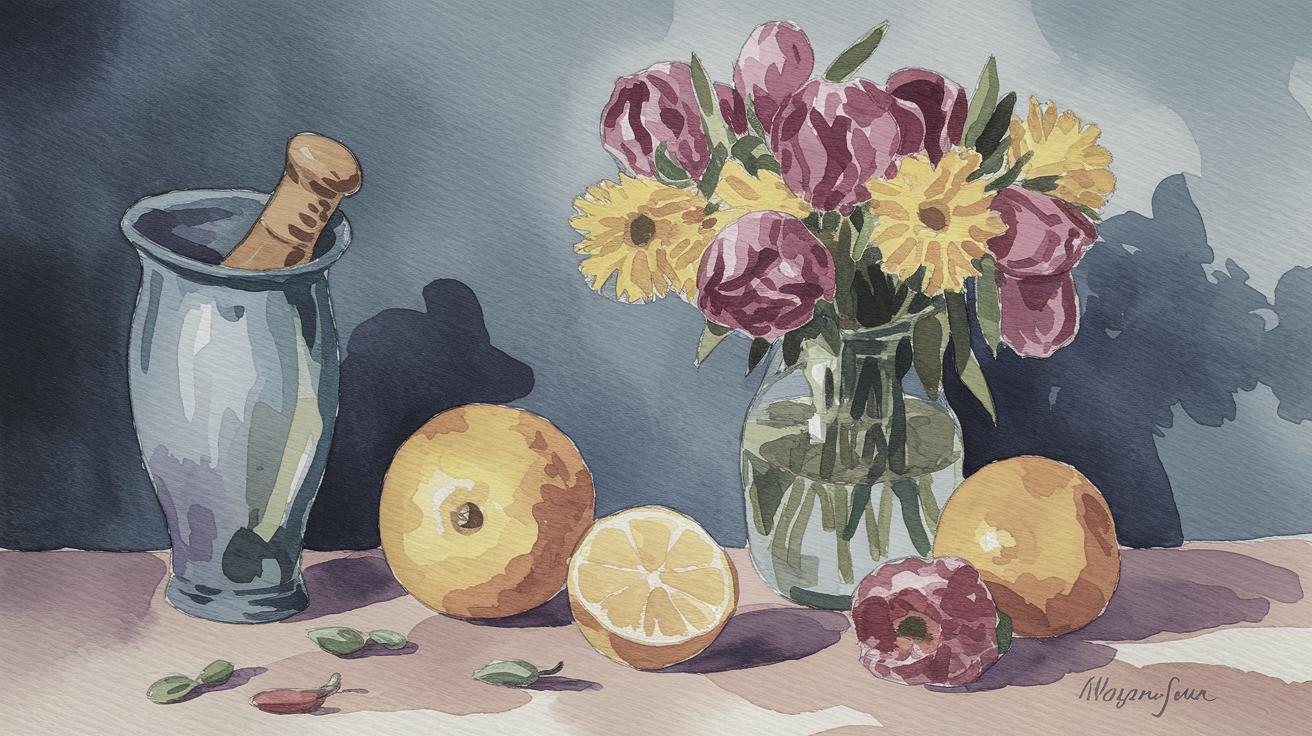Getting Your Paintings into a Gallery: A Roadmap for Success
Aspiring to have your paintings showcased in a gallery can be an exhilarating yet daunting journey for any artist. This blog post explores various artistic challenges and techniques that can refine your work, making it more viable for gallery consideration. Whether it’s mastering quick sketches or understanding the intricacies of floral art, such endeavors sharpen your skills and broaden your portfolio. We’ll also delve into the importance of starting with design and values, the art of suggestion versus explicit illustration, and highlight exemplary works like “Old Copper and Fruit”. By the end, you’ll have a comprehensive blueprint to enhance your artistry and increase your chances of being featured in esteemed galleries.
10-Minute Thumbnail Sketch Challenge: Birds
The 10-minute thumbnail sketch challenge is a powerful exercise for artists seeking to capture the essence of their subject quickly and efficiently. Focusing specifically on birds, this challenge pushes you to see beyond the obvious details and emphasize the overall form and movement. Working within such a limited time frame encourages you to discard perfectionism and tap into your spontaneity and intuition.
Bird sketching demands keen observational skills, as it involves translating fleeting movements and intricate details into fluid lines and shapes. Participate regularly in these brief sketching sessions to enhance your ability to distill complex subjects into simple, dynamic representations. Over time, your sketches will become more confident and expressive, helping to create a compelling starting point for more detailed paintings.
A Floral Spotlight: Each Iris Has Its Own Personality
Florals, often misconceived as being uniform, hold unique characteristics that an artist can harness to express individual personality. Each iris, with its delicate petals and vibrant hues, can be an ideal muse for developing a distinct style and voice in your paintings. Observing the subtle variations in color, form, and structure among irises will push your observational capabilities and refine your approach to floral art.
When painting irises, emphasize their individuality by experimenting with different perspectives and compositions. Capture the spirit of each bloom by playing with light and shadow to highlight its unique features. This exercise not only improves your attention to detail but also enriches your portfolio, making it more attractive to galleries that appreciate creativity and originality.
Starting a Painting with Design and Values
One of the most crucial aspects of creating a standout piece of art is beginning with a strong foundation in design and values. This approach prioritizes the compositional layout and tonal relationships within a painting, which dictate the balance and visual impact of the final piece. A robust design framework guides the viewer’s eye, ensuring your painting communicates its intended message clearly.
When you commence a painting by focusing on design and values, you establish a roadmap that informs each subsequent layer and detail you add. By laying a clear blueprint involving well-considered elements like negative space, hierarchical focus points, and value contrasts, your work increases its likelihood of resonating with viewers and potential gallery curators.
Indicate, Don’t Illustrate
It’s essential for artists to master the art of suggestion over explicit illustration. One effective way to communicate this concept to your audience is by indicating elements of a composition while leaving certain aspects open to interpretation. Just as in literature where less can sometimes be more, in painting, the ability to hint rather than tell creates intrigue and depth.
By opting to imply certain aspects of your painting, such as background elements or minor subjects, you allow viewers to engage more actively with your work, filling in the blanks with their imagination. This technique not only enriches the storytelling potential of your art but also aligns with modern gallery trends that favor subtlety and narrative engagement.
Painting of the Week: “Old Copper and Fruit”
“Old Copper and Fruit” serves as an exemplar for both aspiring and seasoned artists looking to enter prestigious galleries. This painting beautifully balances texture, color, and light, showcasing the artist’s prowess in still-life composition. By emphasizing the gleam of the copper against the muted tones of the fruit, the painting creates a rich visual dialogue.
The work demonstrates mastery in value control and compositional balance, offering a sense of timelessness and sophistication. Analyzing such paintings can inspire you to develop your unique style and polish technical prowess, tailoring your portfolio to meet the high standards galleries attain. Emulating such compositions while preserving originality can place your work on a gallery’s radar.
Future Prospects: Enhancing Your Artistic Journey
| Focus Area | Highlights |
|---|---|
| 10-Minute Thumbnail Sketch Challenge: Birds | Enhances speed and observation in capturing the essence of moving subjects through quick sketching practices. |
| A Floral Spotlight: Each Iris Has Its Own Personality | Encourages seeing individuality in similarity, boosting creativity with floral subjects. |
| Starting a Painting with Design and Values | Establishes strong compositional foundations, ensuring clarity and impact in artworks. |
| Indicate, Don’t Illustrate | Advocates for the technique of suggestion, enhancing viewer engagement and narrative depth. |
| Painting of the Week: “Old Copper and Fruit” | Demonstrates expert use of texture, color, and composition in still-life art, offering inspiration for portfolio development. |


